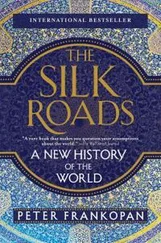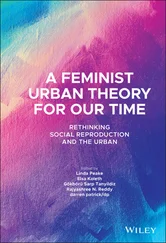Carroll Quigley - Tragedy and Hope - A History of the World in Our Time
Здесь есть возможность читать онлайн «Carroll Quigley - Tragedy and Hope - A History of the World in Our Time» весь текст электронной книги совершенно бесплатно (целиком полную версию без сокращений). В некоторых случаях можно слушать аудио, скачать через торрент в формате fb2 и присутствует краткое содержание. Год выпуска: 2014, ISBN: 2014, Издательство: GSG & Associates Publishers, Жанр: Старинная литература, на английском языке. Описание произведения, (предисловие) а так же отзывы посетителей доступны на портале библиотеки ЛибКат.
- Название:Tragedy and Hope: A History of the World in Our Time
- Автор:
- Издательство:GSG & Associates Publishers
- Жанр:
- Год:2014
- ISBN:094500110X
- Рейтинг книги:3 / 5. Голосов: 2
-
Избранное:Добавить в избранное
- Отзывы:
-
Ваша оценка:
- 60
- 1
- 2
- 3
- 4
- 5
Tragedy and Hope: A History of the World in Our Time: краткое содержание, описание и аннотация
Предлагаем к чтению аннотацию, описание, краткое содержание или предисловие (зависит от того, что написал сам автор книги «Tragedy and Hope: A History of the World in Our Time»). Если вы не нашли необходимую информацию о книге — напишите в комментариях, мы постараемся отыскать её.
Tragedy and Hope: A History of the World in Our Time — читать онлайн бесплатно полную книгу (весь текст) целиком
Ниже представлен текст книги, разбитый по страницам. Система сохранения места последней прочитанной страницы, позволяет с удобством читать онлайн бесплатно книгу «Tragedy and Hope: A History of the World in Our Time», без необходимости каждый раз заново искать на чём Вы остановились. Поставьте закладку, и сможете в любой момент перейти на страницу, на которой закончили чтение.
Интервал:
Закладка:
The approximate relationship of these various stages may be seen in the following table:
Name
Dates
Typical Organization
Management
Manorial
670-
Manor
Custom
Commercial capitalism
a. 1050-1270
b. 1440-1690
Company Chartered company
Municipal mercantilism State mercantilism
Industrial capitalism
1770-1870
Private firm or partnership
Owners
Financial capitalism
1850-1932
Corporation and holding company
Bankers
Monopoly capitalism
1890-1950
Cartels and trade association
Managers
Pluralist economy
1934 to present
Lobbying groups
Technocrats
Two things should be noted. In the first place, these various stages or periods are additive in a sense, and there are many survivals of earlier stages into later ones. As late as 1925 there was a manor still functioning in England, and Cecil Rhodes’s chartered company which opened up Rhodesia (the British South Africa Company) was chartered as late as 1889. In the same way owner-managed private firms engaging in industrial activities, or corporations and holding companies engaging in financial activities, could be created today. In the second place all the later periods are called capitalism. This term means “an economic system motivated by the pursuit of profits within a price system.” The commercial capitalist sought profits from the exchange of goods; the industrial capitalist sought profits from the manufacture of goods; the financial capitalist sought profits from the manipulation of claims on money; and the monopoly capitalist sought profits from manipulation of the market to make the market price and the amount sold such that his profits would be maximized.
It is interesting to note that, as a consequence of these various stages of economic organization, Western Civilization has passed through four major stages of economic expansion marked by the approximate dates 970-1270, 1440-1690, 1770-1928, and since 1950. Three of these stages of expansion were followed by the outbreak of imperialist wars, as the stage of expansion reached its conclusion. These were the Hundred Years’ War and the Italian Wars (1338-1445, 1494-1559), the Second Hundred Years’ War (1667-1815), and the world wars (1914-1945). The economic background of the third of these will be examined later in this chapter, but now we must continue our general survey of the conditions of Western Civilization in regard to other aspects of culture. One of these is the fourth and last portion of the economic level, that concerned with economic control.
Economic control has passed through four stages in Western Civilization. Of these the first and third were periods of “automatic control” in the sense that there was no conscious effort at a centralized system of economic control, while the second and fourth stages were periods of conscious efforts at control. These stages, with approximate dates, were as follows:
Automatic control: manorial custom, 650-1150
Conscious control
a. municipal mercantilism, 1150-1450
b. state mercantilism, 1450-1815
3. Automatic control: laissez-faire in the competitive market,
1815-1934
4. Conscious control: planning (both public and private),
1934-
It should be evident that these five stages of economic control are closely associated with the stages previously mentioned in regard to kinds of weapons on the military level or the forms of government on the political level. The same five stages of economic control have a complex relationship to the six stages of economic organization already mentioned, the important stage of industrial capitalism overlapping the transition from state mercantilism to laissez-faire.
When we turn to the social level of a culture, we can note a number of different phenomena, such as changes in growth of population, changes in aggregates of this population (such as rise or decline of cities), and changes in social classes. Most of these things are far too complicated for us to attempt to treat them in any thorough fashion here. We have already discussed the various stages in population growth, and shown that Europe was, about 1900, generally passing from a stage of population growth with many persons in the prime of life (Type B), to a stage of population stabilization with a larger percentage of middle-aged persons (Type C). This shift from Type B to Type C population in Europe can be placed most roughly at the time that the nineteenth century gave rise to the twentieth century. At about the same time or shortly after, and closely associated with the rise of monopoly capitalism (with its emphasis on automobiles, telephones, radio, and such), was a shift in the aggregation of population. This shift was from the period we might call “the rise of the city” (in which, year by year, a larger portion of the population lived in cities) to what we might call “the rise of the suburbs” or even “the period of megapolis” (in which the growth of residential concentration moved outward from the city itself into the surrounding area).
The third aspect of the social level to which we might turn our attention is concerned with changes in social classes. Each of the stages in the development of economic organization was accompanied by the rise to prominence of a new social class. The medieval system had provided the feudal nobility based on the manorial agrarian system. The growth of commercial capitalism (in two stages) gave a new class of commercial bourgeoisie. The growth of industrial capitalism gave rise to two new classes, the industrial bourgeoisie and the industrial workers (or proletariat, as they were sometimes called in Europe). The development of financial and monopoly capitalism provided a new group of managerial technicians. The distinction between industrial bourgeoisie and managers essentially rests on the fact that the former control industry and possess power because they are owners, while managers control industry (and also government or labor unions or public opinion) because they are skilled or trained in certain techniques. As we shall see later, the shift from one to the other was associated with a separation of control from ownership in economic life. The shift was also associated with what we might call a change from a two-class society to a middle-class society. Under industrial capitalism and the early part of financial capitalism, society began to develop into a polarized two-class society in which an entrenched bourgeoisie stood opposed to a mass proletariat. It was on the basis of this development that Karl Marx, about 1850, formed his ideas of an inevitable class struggle in which the group of owners would become fewer and fewer and richer and richer while the mass of workers became poorer and poorer but more and more numerous, until finally the mass would rise up and take ownership and control from the privileged minority. By 1900 social developments took a direction so different from that expected by Marx that his analysis became almost worthless, and his system had to be imposed by force in a most backward industrial country (Russia) instead of occurring inevitably in the most advanced industrial country as he had expected.
The social developments which made Marx’s theories obsolete were the result of technological and economic developments which Marx had not foreseen. The energy for production was derived more and more from inanimate sources of power and less and less from human labor. As a result, mass production required less labor. But mass production required mass consumption so that the products of the new technology had to be distributed to the working groups as well as to others so that rising standards of living for the masses made the proletariat fewer and fewer and richer and richer. At the same time, the need for managerial and white-collar workers of the middle levels of the economic system raised the proletariat into the middle class in large numbers. The spread of the corporate form of industrial enterprise allowed control to be separated from ownership and allowed the latter to be dispersed over a much wider group, so that, in effect, owners became more and more numerous and poorer and poorer. And, finally, control shifted from owners to managers. The result was that the polarized two-class society envisaged by Marx was, after 1900, increasingly replaced by a mass middle-class society, with fewer poor and, if not fewer rich, at least a more numerous group of rich who were relatively less rich than in an earlier period. This process of leveling up the poor and leveling down the rich originated in economic forces but was speeded up and extended by governmental policies in regard to taxation and social welfare, especially after 1945.
Читать дальшеИнтервал:
Закладка:
Похожие книги на «Tragedy and Hope: A History of the World in Our Time»
Представляем Вашему вниманию похожие книги на «Tragedy and Hope: A History of the World in Our Time» списком для выбора. Мы отобрали схожую по названию и смыслу литературу в надежде предоставить читателям больше вариантов отыскать новые, интересные, ещё непрочитанные произведения.
Обсуждение, отзывы о книге «Tragedy and Hope: A History of the World in Our Time» и просто собственные мнения читателей. Оставьте ваши комментарии, напишите, что Вы думаете о произведении, его смысле или главных героях. Укажите что конкретно понравилось, а что нет, и почему Вы так считаете.











